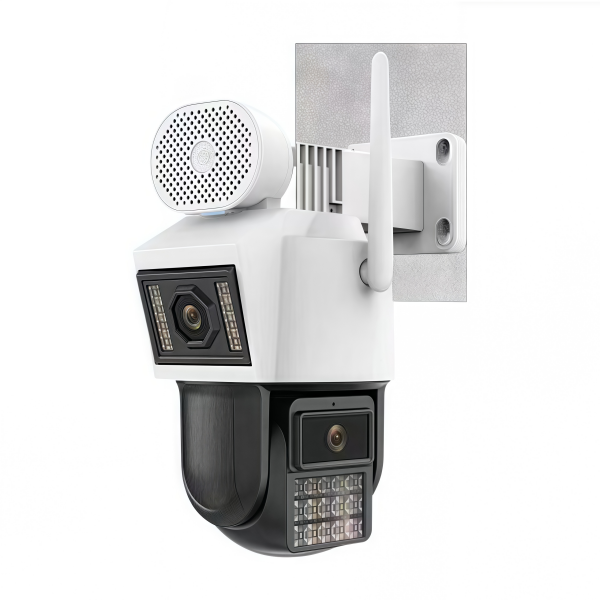With the continuous advancement of science and technology, the application of advanced technologies such as high definition, panoramic coverage, and night vision has enabled surveillance cameras to play an important role in the field of security. They can obtain information in a timely manner, ensure public safety, and respond to emergencies.
Cameras have become an indispensable security device in contemporary society. They are widely used in various fields such as public places, commercial institutions, and personal homes.
Definition, classification, principle, and technology of surveillance cameras
A surveillance camera is an audio-visual device that can capture and record various images and sound information in the area in real time.
According to different application requirements, surveillance cameras can be divided into fixed and movable types.
Its working principle is mainly to convert optical signals into electrical signals through photosensitive devices and image processing devices, and transmit images and sounds to the monitoring center or storage device through transmission media.
1. Application of surveillance cameras in the public field
1. Traffic management
Surveillance cameras play an important role in traffic management. By monitoring traffic lights, traffic jams, illegal driving, etc., it is possible to grasp road traffic conditions in real time, improve traffic efficiency, and reduce the incidence of accidents.
2. Security monitoring
Installing surveillance cameras in public places such as stations, airports, and commercial areas can effectively prevent all kinds of crimes, monitor the occurrence of illegal acts and report them in time, provide effective evidence for criminal investigation, and increase the effect of public security maintenance.
2. Application of surveillance cameras in the commercial field
1. Shop security
Shops can effectively prevent and record theft in the store, improve the sense of security of shop owners and customers, and reduce economic losses.
2. Production and life monitoring
Surveillance cameras can monitor the production process and equipment operation status in real time in production environments such as factories and warehouses, and improve production efficiency and safety. Setting up cameras in residential areas can monitor children going to and from school and the daily life of the elderly, and provide timely rescue and care.

3. Application of surveillance cameras in the personal field
1. Home security
Setting up surveillance cameras at home can effectively prevent burglary and protect the safety of family members. Users can remotely view the situation at home through mobile phones or computers and take timely measures.
2. Personal privacy
Although surveillance cameras have a positive role in protecting security, they have also caused concerns about personal privacy. Surveillance cameras may record personal privacy, such as residents' daily life, private behavior, etc., making people feel monitored and their privacy rights violated.
Therefore, the security and privacy of surveillance cameras are inseparable. Therefore, we should do the following:
1. Strictly regulate the setting scope and monitoring targets of surveillance cameras to ensure that they do not exceed the necessary scope and avoid violating personal privacy.
2. Improve the transparency of the use of surveillance cameras, inform the public of the location and purpose of monitoring equipment, and increase the public's understanding and acceptance of the monitoring mechanism.
3. Strengthen the protection of monitoring data, establish a sound data management and access rights system, and prevent the abuse and leakage of monitoring data. And secure storage and transmission technology can be used to ensure that the camera data is not illegally obtained and tampered with.
4. Promote public participation in monitoring management, establish a supervision mechanism, let people participate in the setting and use decisions of surveillance cameras, and jointly maintain the balance between security and privacy.
Surveillance cameras can play an important role in maintaining social security and order under the premise of reasonable application. In the process of using cameras, it is necessary to ensure the balance between security and privacy in accordance with laws, regulations and ethical standards. At the same time, technical means and design principles are used to optimize the application of cameras, reduce infringements on personal privacy, and further enhance the public's trust in the rational use of cameras.


